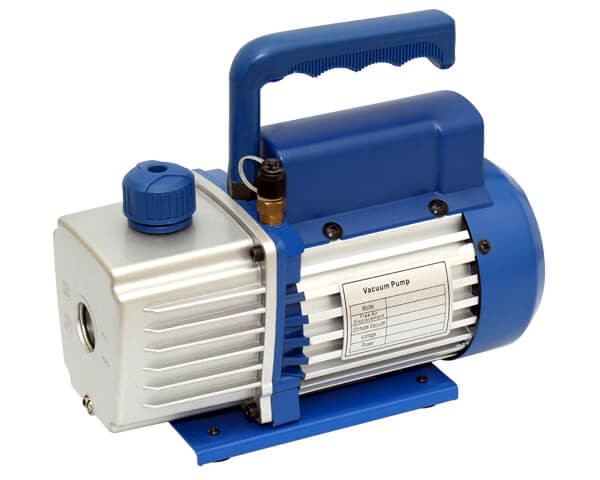How the pump works: principle of operation, characteristics and types of devices
In this article you will learn how many types of pumps there are, what are the most popular types of water/gas pumps, the design of piston pumps, the operating principles of vortex, centrifugal, and rotary pumps.
The operating principle of the pump depends on its type, so first you need to understand the types of pumps. In total there are about three thousand of them. They differ in design, mode of action, mechanism, and method of supplying/dispensing water. All types of pumps can be divided into two large groups: positive displacement and dynamic.
In positive displacement pumps, liquid/gas is pushed out due to a change in the volume of the internal chamber. The most popular example is piston pumps. In them, the piston moves to the end of the chamber, and water follows it into the open chamber, after which the piston begins to move in reverse - the volume of the chamber decreases, the water pressure increases, and it flies out of the pipe.
In dynamic pumps, the volume of the chamber does not decrease - water is pushed out from the action of the pump elements on it. For example, centrifugal and vortex.
Here are the main types of pumps:
- Piston
- Winged
- Vane rotor
- External gears
- Internal gears
- Cams with sickle-shaped rotors
- Impeller
- Sinus
- Screw
- Peristaltic
- Vortex
- Centrifugal
Below we will analyze the 4 most popular types of pumps, tell you about the characteristics of different types of pumps, the design of the pumps and the principle of their operation.
The content of the article
Rotary pumps
The main feature of rotary pumps is that they do not have a valve. This role is performed by rotors, which hermetically shut off the water supply.
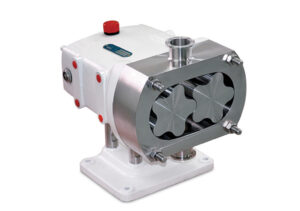
Operating principle of rotary pumps
Water enters one side of the pump and exits the opposite. Inside there are two trimmed half-discs. There is a space between their width and the wall of the pump, and it is filled with water. The motor drives the half-discs. They are designed so as not to touch each other when rotating. A portion of water is sealed and moved by the rotor, after which two chambers with water are connected, the rotors compress them, because of this the pressure increases, the water is pushed out of the pump. The rotors return to place and the cycle repeats.
Pros of rotary models:
- High performance
- No vibration
- They don't make noise
- Can pump thick, viscous and hot substances
- You can supply water in the opposite direction without removing the pump
- Water is self-priming
- No cooling needed
- No lubrication needed
Minuses:
- Expensive repairs
- High price
- Cannot work with solid inclusions
Rotary models are most often used in industry, mainly in the oil sector, but also in chemical, marine and food processing plants. Often rotary pumps are installed by utilities in central heating systems.
Piston pumps
Piston pump models are popular in everyday life and industry. They have two valves. They are located in places where the housing is connected to the water supply/discharge pipes. The body of such devices is a cylinder.It contains a piston that fits tightly to the walls of the cylinder. A tube is connected to the piston, which connects it to the connecting rod. The second is connected to the crank. It is located on one side of the disk.
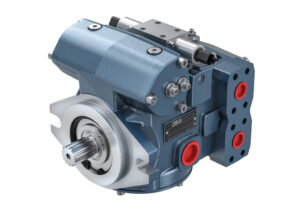
Operating principle of piston pumps
The motor rotates a disk with a crank. When the crank moves away, it pulls the connecting rod with it, then the tube, the tube and the piston. This increases the volume of the chamber into which water flows. Water fills the chamber and the disk rotates. The crank pushes the connecting rod, tube and piston. The piston presses on the water, the pressure increases, and the water is pushed out of the pump.
The main advantages of piston pumps:
- Reliable - there is almost nothing to break in them
- Easy assembly
- No lubrication needed
- No cooling needed
Minuses:
- Low efficiency
- Low performance
Most often, piston pumps can be found in the food industry and in domestic heating systems. They are often used in the chemical field due to the fact that they can work with aggressive and explosive substances.
Centrifugal pumps
Centrifugal models are dynamic pumps. They push water out using blades. The design of centrifugal pumps: a wheel with a small number of blades is attached to the rotation axis, the entire mechanism is located in a metal casing, water enters it directly into the center of the wheel, and it comes out of a side tube.
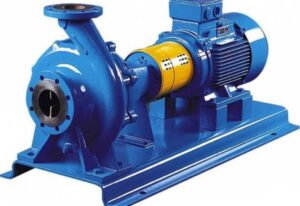
Operating principle of centrifugal pumps
Water is sucked into the device through the supply pipe. The flow is divided into two parts - up and down. The motor moves the wheel with blades. The blades move a portion of water to the outlet tube and push it out.
Advantages of centrifugal pumps:
- High performance
- High efficiency (97%)
- Work with large volumes of water
- Powerful
- No pulsation in the water supply
Minuses:
- Must be completely filled with water - otherwise they may jam
- Sensitive to air bubbles
- Expensive repairs
Centrifugal models are installed in industry; they work with large volumes of water, are powerful and have high efficiency; They are installed less often in everyday life, as they are intended for intensive and large-scale work. Centrifugal pumps are used to pump water from shallow sources (up to 10 meters).
Vortex pumps
Some of the most popular models. Their design and operating principle are similar to their centrifugal counterparts. The design of vortex pumps: a disk with a large number of blades/vanes is attached to the end of the motor axis, the mechanism is located in a housing where water enters and exits from opposite sides.
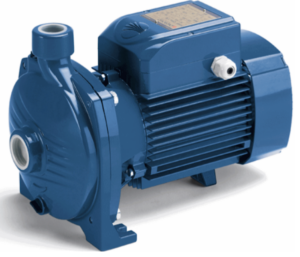
Operating principle of vortex pumps
Water is supplied on one side. The blades, rotated by a motor, move streams of water - they suck in, seal and move portions. This creates a vortex inside the pump chamber, which increases the flow. The water is pushed out by the vortex and the blades from the opposite side. At the outlet, the water pressure increases 5-7 times.
Advantages of vortex pumps:
- Reliable
- Work with solid particles in water
- Can pump aggressive, gaseous and hot liquids
- Silent
- Small dimensions
- Low price
- High pressure of outgoing water
Minuses:
- Cannot pump viscous and thick liquids
- Poor performance
- Low power
- Low efficiency (no more than 45%)
Such devices are used mainly in everyday life - where high liquid pressure at the outlet is needed. For example, in heating systems, lifting water from deep wells (up to 20 meters).




